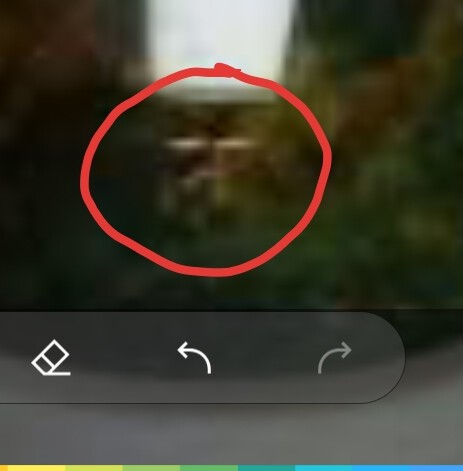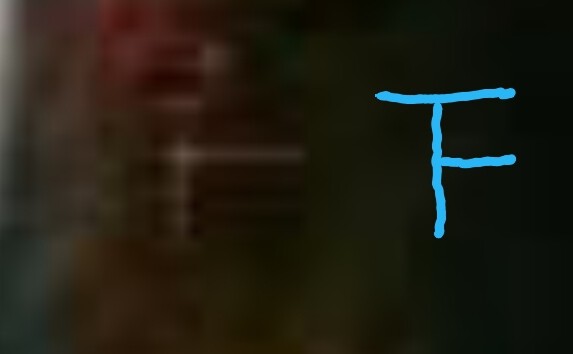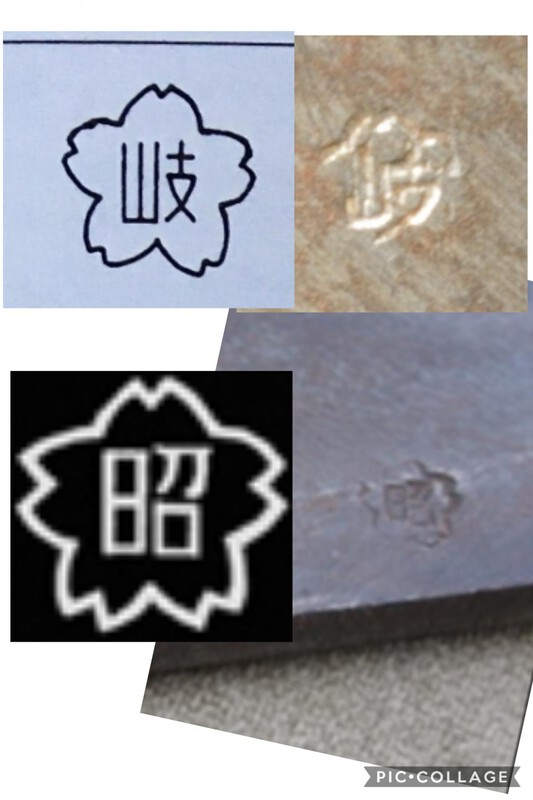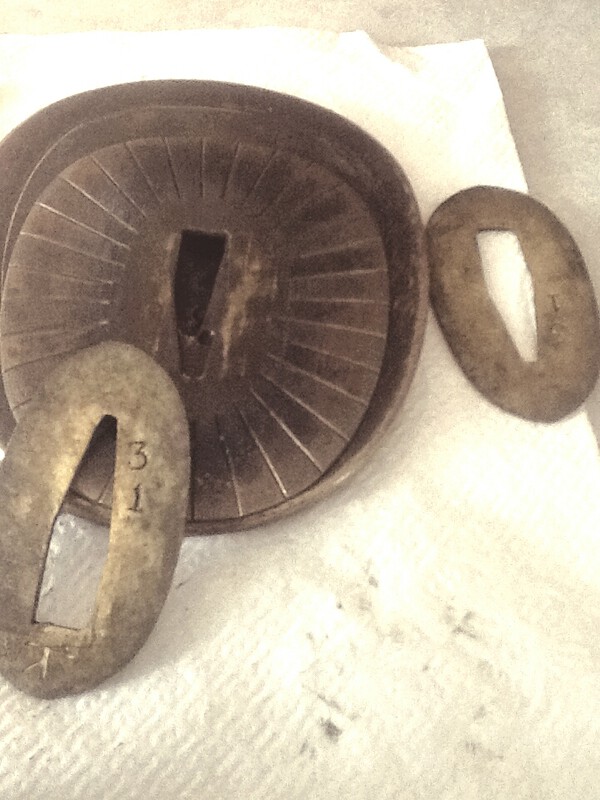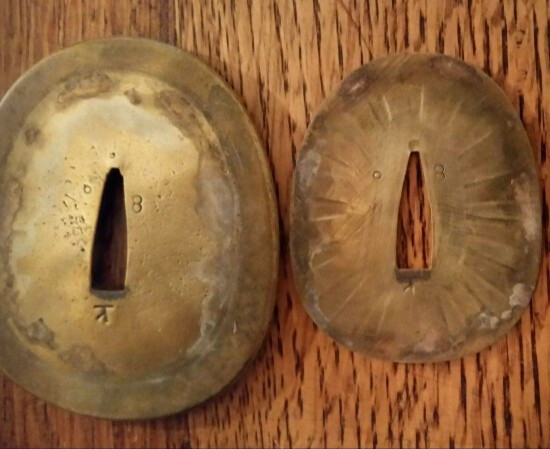-
Posts
12,988 -
Joined
-
Last visited
-
Days Won
155
Content Type
Profiles
Forums
Events
Store
Downloads
Gallery
Everything posted by Bruce Pennington
-
Sorry, but I have to ammend this, and it's too late to just edit the post: Thanks to Guy over on Warrelics, the inspector stamp is simply a poorly struck "To", with the lower "legs" struck heavily, and the top half too lightly.
-
George, I've righted the picture to put it cutting-edge up, and in that position, you can see the stamp is the same as in my other 2 examples - mirror image of the "ue". I think the scratched kanji (oddly written with cutting-edge down) might be exactly what you are describing.
-
I agree with Chris & Ray, and would add that the answer to what to do with it depends upon what the owner plans to do with it. If he's planning to keep it FOREVER and never sell it, then do what he wants to it, but with sound advice. If he thinks he'll sell it, what you do to it can be quite different. "Polishing" a blade can really mess up the look if done wrong. An ametuer with a car buffer or belt buffer puts a glassy finish on the blade that ruins the look. A real polish costs from $700 to $2,400 USD, but is worth every penny if the blade has sentimental value (like mine). In this case, the polish is worth more than the blade, as standard WWII officer gunto, fully decked out, are selling around $1,000 USD. You can find handles (tsuka) and handguards (tsuba & seppa) for sale on the internet, via dealers and ebay for a couple hundred each. You didn't say if it came with a scabbard (saya). But choosing HOW to fit it out depends upon whether this blade was Army or Navy, and having the saya would tell you that. Home-made fittings will detract from the value if he plans to sell. Selling it as-is is better.
-
One of the best Gifu stamps I’ve seen!
-
This one is clearly a Showa stamp, placed sideways. Your original is something else, like discussed above. I've love to see it with those small rust pieces removed from the stamp. It looks more like a Gifu than chimata, but without removing the rust pieces it's hard to say.
-
Thought I'd correct our discussion on this one. While it seemed it might be a "saka" stamp, I'm pretty sure now that it's the "Se", second inspection mark of the Kokura Arsenal From Ohmura: Second Factory 廠Inspection mark Army Arsenal Kokura Second Factory inspection mark: "Se".
-
George,That was the theory from my earlier inquiry on the same kanji, but they said it's a mirror image of the actual. I'm posting a picture of mine. And I just noticed they're both on navy fittings too.
-
Geoff, I can't help with the scratched kanji, hopefully someone will; but the stamped mark is a mystery. It's a mirror image of a kanji, but as it's marked, it has not known meaning. I have collected 2 other pictures of seppa and tsuba with it. I believe it's likely a korshirae manufacturer's company mark, or an inspector of one.
-

Attention Mantetsu Owners: A Survey
Bruce Pennington replied to Bruce Pennington's topic in Military Swords of Japan
Thanks John! -

Koa Isshin With Nthk Papers
Bruce Pennington replied to PNSSHOGUN's topic in Military Swords of Japan
Thanks John! -

Military sword , Older blade?
Bruce Pennington replied to phil reid's topic in Military Swords of Japan
After re-reading Nick's post, #66 on this thread: http://www.warrelics.eu/forum/Japanese-militaria/short-development-history-type-95-gunto-676112-7/it sounds to me like this could have been carried by an NCO. The order allowing NCO's to carry family swords states the rig must "be suitably converted to resemble regulation specs." We have all seen numberous variations on the tsukas of converted blades, but having an aluminum handle doesn't appear to be one of them, so I assume conversion kits only used officer-stlyed tsuka. Of course many of them used the original tsuka and simply replaced things like menugi, tsuba, seppe, etc; but some of them have full IJA tsuka. I would say this one falls into the "it could be any option of many" on how the NCO tassel got there. -

I need help with translation on this.
Bruce Pennington replied to bigscreen64's topic in Translation Assistance
That is a really nice blade Brandon. The experts will have to complete the read on the nakago. I have seen a couple of blades who's inscriber had poor writing skills, and both turned out to be legit. I guess some smiths just missed the whole "caligraphy" practice part of their apprentice-ship. If you don't get more help here, there's a guy named "Guy" over on Wehrmacht-Awards that is great at translation: http://www.wehrmacht-awards.com/forums/forumdisplay.php?f=59 -

Attention Mantetsu Owners: A Survey
Bruce Pennington replied to Bruce Pennington's topic in Military Swords of Japan
John, great one thanks! Unpolished '39 in combat saya - 780,000 yen ($7,500 USD)!!!!!!!! Pics added in case the link goes dead in the future. -
Neil, I've never seen a saya marked this way, so nothing to reference an opinion about this on. Your guess that the name was the surrendering owner is as good as I could come up with. The katakana & number above it would have some sort of meaning that he would understand, but this baby is just too unique to pin down.
-
Neil, The "Ho" was used by Kokura Arsenal as a "first inspetion mark", but why this would be marked on the outside of a saya is a mystery. Does the "83" match numbers on the other fittings?
-
Chuck, they are all the "Na" of Nagoya Arsenal. I have several extra seppa that I bought as a group when filling in a couple of my gunto that were missing seppa. If you want to PM me, and give me an address, I'll send you the lot, you can chose what you need and mail the rest back. I live in CO too, so easy mailing.
-
Check this thread, a couple of guys mentioned there, The_ozzy-samurai, and another. Might try DaveR also. http://www.militaria.co.za/nmb/topic/19949-small-metal-screw-replacements-for-shin-guntos/?hl=screws
-
Interesting! How's the fit?
-

Anchor Mon On Rinji (Type 3)
Bruce Pennington replied to Bruce Pennington's topic in Military Swords of Japan
Yes, and I believe I’ve seen it once before. If I can find it, I’ll post it here. Honestly, there’s no reason a guy who has a mon wouldn’t put it on a Rinji as well as any other. Like Nick says, they’re all gunto. -
Real minty fittings, nice!
-

Anchor Mon On Rinji (Type 3)
Bruce Pennington replied to Bruce Pennington's topic in Military Swords of Japan
“this "desperation" officer's sword.” Really? So “desperate “ it’s in high-quality “non-desperate” koshirae!!! Ha! The lengths people will go to, to spice up the sales pitch! -
Charlotte, I would love to hear the story of the family member that brought this home and how he came to own this. The fittings are standard for a blade that was either donated to the war effort by a family, or bought off the civil market by the government. There was quite a shortage of swords during the war and the government made quite a push to get privately owned swords to fill the gap. Once obtained, they would put a wooden saya (scabbard) covered in leather, like yours, and military handguards and spacers (tsuba & seppa). The handle is usually civilian, but will often have the army or navy emblem (menugi) tucked into the weave, like yours. Some were hastily put together, and may explain the look/quality of your handle. It is possible the blade was made during the war, but the fittings show it came from the civil market/family. Terms are confusing in this hobby, but "machine made" is a bit of a misnomer, as all officer swords were made by people. Yours COULD be non-traditionally made, but that simply means it was oil-tempered, rather than water, and other aspects. Yours is a true weapon, not a "parade" sword for show. If you can get clear close-ups of the temper line we might be able to make a better guess as to how it was made. Are there any writing on the other side? That is where the date ususally is, but they didn't always put one.
-
Plum blossoms are Chinese.
-
Chris, I agree with the above that the mei and date are WWII style and the date is 1943. The nakago looks too new to be older than that, unless it has been cleaned. Why it would have 3 mekugi ana - possibly field damage and repairs? What is it that gave the impression of 1800's?
-
Ok, thanks Jean.


